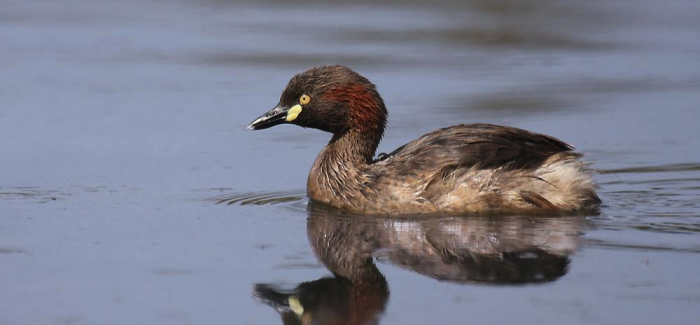Biology – Australasian Grebe
Editor | On 24, Mar 2019
Darrell Mann
Like most grebes, the Australasian grebe is a poor flier and even worse on land due to its short wings and its legs being placed far back on its body. Grebes have large feet with flat rounded “lobate” toes and small webs between their front three toes, which adapts them well to a life of diving and swimming underwater. In fact, they are excellent swimmers and divers, and when threatened, they typically sink out of sight underwater and then swim away undetected.
This trait highlights a significant physical contradiction: The grebe needs to be buoyant and not buoyant. Sinking is a terrific escape means, but sinking all the time would mean that the bird having to continually expend energy to stay afloat. Here’s what the contradiction looks like mapped on to one of our Bubble Maps:

And here’s what happens when we map that onto the Matrix+ software wizard:

The Grebes’ sinking ability has evolved by their unusual plumage. It is dense (Principle 5) and waterproof (Principle 11), and the underside (Principle 3) of the feathers are at right-angles to the skin (Principle 17) straight out to begin with and curling at the tip, allowing the birds to trap large air bubbles (Principle 24) so they float. When grebes press their feathers against the body (Principle 15), these bubbles are released and their buoyancy is reduced. They sink.
Simple when you know how.

